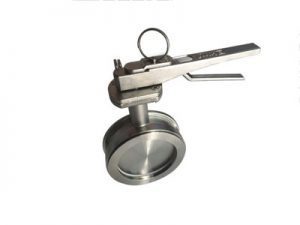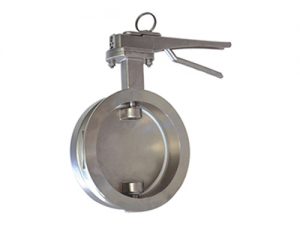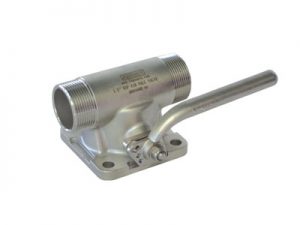Butterfly valve is a kind of valve whose closure (disc or butterfly plate) is a disc, which rotates around the valve axis to open and close. It is mainly used for cutting off and throttling in the pipeline. The opening and closing part of butterfly valve is a disc-shaped butterfly plate, which rotates around its own axis in the valve body to achieve the purpose of opening and closing or regulating. Butterfly valves are usually less than 90 degrees open to close. Butterfly valves and butterfly rods have no self-locking ability. In order to locate the butterfly plate, worm gear reducer should be installed on the valve stem. The use of worm gear reducer can not only make the butterfly plate have self-locking ability, make the butterfly plate stop at any position, but also improve the operation performance of the valve.
Butterfly valve is a kind of valve which uses circular butterfly plate as opening and closing parts and rotates with the stem to open, close and adjust the fluid passage. The butterfly plate of the butterfly valve is installed in the diameter direction of the pipeline. In the cylindrical channel of the butterfly valve body, the disc butterfly plate rotates around the axis, and the rotation angle is between 0 ~90. When the rotation angle is between 0 ~90, the valve is fully open.
Key points of construction and installation:
1. Installation location, height, import and export direction meet the design requirements, the connection should be firm and tight.
2. All kinds of manual valves installed on insulation pipes shall not have downward handles.
3. Appearance inspection should be carried out before the valve is installed. The nameplate of the valve should comply with the current standard GB12220. For valves with working pressure greater than 1.0 MPa and cutting off effect on main pipe, strength and tightness performance tests should be carried out before installation, and the valves should be used only when they are qualified. In the strength test, the test pressure is 1.5 times of the nominal pressure, and the duration is not less than 5 minutes. The valve shell and packing should be qualified without leakage. The test pressure is 1.1 times of the nominal pressure in the tightness test, and the test pressure should meet the requirements of GB50243 standard for the duration of the test, with no leakage on the valve sealing surface as the qualification.




